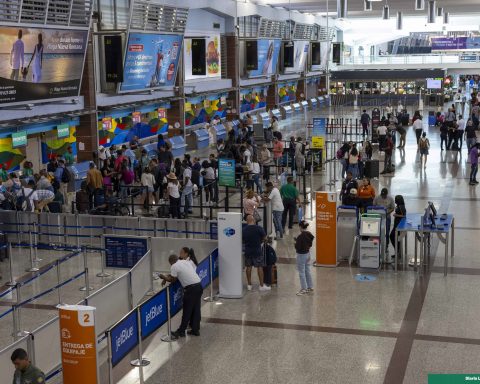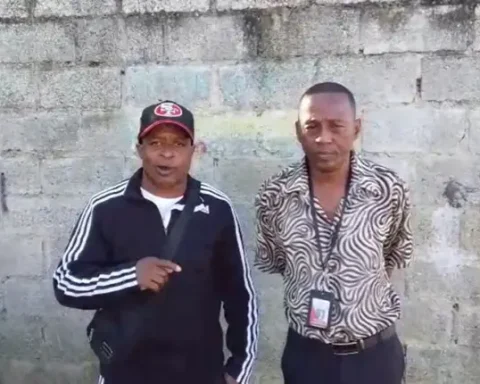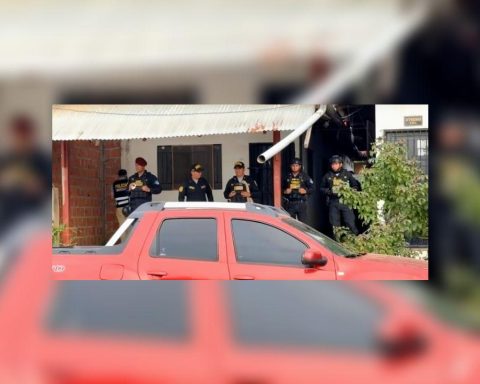José Duluc’s interest in music began at an early age in his native Higüey, as his mother and brothers sang, and one of them had a merengue group. But the UASD Folkloric Ballet was a crucial element in his life, because through it he was introduced to folk music alongside musicians Luis Minier, José Castillo and Iván Domínguez. He began as a dancer and then became a ballet musician, thus exploring traditional music. This experience led him to collaborate with Luis Días in the groups “Generación en Rojo” and “Transporte Urbano”, where he explored rock and electric music sounds that influenced his composition and exploration of contemporary urban sound, without losing his folkloric and rural roots.
How was the transition from folk music and fusions to jazz with “Los Guerreros del Fuego”?
Although I wanted to electrify the music, I didn’t pursue rock music, because it wasn’t my thing. I founded another band called “Los Guerreros de Fuego” with a repertoire I composed, where I intended to expand the rhythm with urban percussion like drums, fused with popular and folk percussion. To this were added the jazzy touches brought by Toné Vicioso, the guitarist who accepted my proposal to form the group. From this fusion emerged an electric and at the same time jazzy sound, which is evident in a single we recorded entitled “5to. Centenario y la Cigua Mamonera”.
How did your time in Villa Mella with its traditional musical styles recognized by UNESCO influence your perspective and musical work?
After the disintegration of Los Guerreros de Fuego, my passion for music led me to move to Villa Mella, where my musical career took a definitive turn thanks to the influence of Sixto, Casimiro and Cundengo Minier, Pio Brazobán and Enerolisa Núñez. From that stage came my first album, “Pánico,” which incorporated various nuances of Dominican music. The song “Ogun Balenyo,” performed by Kinito Méndez and Enerolisa Núñez, became popular after that album. In addition to the musical aspect, this experience produced a human and spiritual transformation that reconnected me with the mountains and the natural life of my childhood.
What impact did your work in Japan have on the perception of Dominican music abroad?
I lived in Japan for almost 7 years, where I had the opportunity to teach folk music classes, lectures, workshops, concerts with a surprising acceptance from the Japanese public. I think we opened many doors in the world because many people knew nothing about the Dominican Republic.
How was Dominican music received in Japan?
I founded three bands that were becoming increasingly important in Japan. First, Dominipon, made up of my students, made headlines by introducing Dominican music. Then, Ga-Caribe, a professional group with which I recorded the single “Pegao de qué y la hipo” and we traveled to many venues and music clubs in Japan, representing Dominican music at the Washoi 2000 festival. Finally, with Wild Merengue Masters, made up of some musicians from Ga-Caribe, we received guests such as Luis Días, Crispín Fernández, Bonny Rapozo, Manuel Acosta and Ken Annof at the Isla de Salsa festival in Fukuoka. We also participated in the documentary “The Caribbeans,” produced by Shimizu Kinya and directed by Hideki Ono, and shared the stage with artists such as Monta Yoshinori and Oshima, star of Okinawa’s Shamizen.
How did your collaboration with Paul Austerlitz on the “Afrodominican Jazz Project” develop?
I met Paul Austerlitz when he came with his saxophone to a bar where I was playing at Raffles. This coincidence started a friendship that culminated ten years later with my participation in his project, the “Afrodominican Jazz Project.” Together we have released several productions, such as “Journey,” exploring new harmonies and learning in this musical world. I also collaborated on albums such as “Doctor Merengue,” where his focus on palo music influenced me deeply. In 2010, we toured together in Philadelphia and New York with musicians from his band such as Babatunde Lea and Robert Johnson. My musical style, recognized for innovating in traditional Dominican rhythms, has constantly evolved, always looking for new harmonies, rhythms and melodies inspired by folklore to enrich my sound over the years.
What do the awards for “Carnaval para disfrutar” and “El caminando” mean to you?
“Carnaval para gozar” was my first popular composition that won the national prize for carnival music in 1997, performed with Maridalia Hernández and Sergio Vargas in different versions, co-arranged by Manuel Tejada. “El caminandonte”, along with “La ciguapa”, are songs that have had an international impact, which show my direction towards an international sound with Dominican roots. These recognitions have been fundamental in my career.
What inspired you to form “Palo Nuevo” and what is its mission in preserving and promoting traditional rhythms?
Palo Nuevo began as an exploratory process with Ga-caribe, deeply studying the drums and harmonies of Dominican folklore in Japan. I focused on the unique tonalities and melodies of palo, such as A flat major, less common in commercial music. I integrated traditional atabales with contemporary percussion and melodic instruments, maintaining a structure that evolves rather than fuses with other styles. Our mission is to preserve the essence of Dominican palo, adapting it for new settings and audiences, maintaining its authenticity and honoring its vocal tradition and popular wisdom.
What do you think about the preservation and promotion of traditional Dominican music in the modern era?
The preservation and promotion of traditional Dominican music faces challenges in the modern era. Preservation has been slower due to a lack of institutional support, but it is maintained in rural and suburban communities thanks to its connection to religious and everyday life. Promotion has also been limited, as there is no solid industry as in other countries where traditional music has greater global visibility and recognized figures. However, I see potential in a greater commitment of urban musicians to traditional roots to build bridges with academic musicians and achieve a broader and more sustainable diffusion, both in religious and festive contexts. Despite the challenges, I believe that this music will continue to be essential to our Dominican and Caribbean cultural identity.
Stimulus
My main motivation to follow this path has been my love and passion for music, which has become fundamental in my life.”
Experience
I lived in Japan for almost 7 years where I taught folk music classes, countless lectures, workshops and concerts with great acceptance from the Japanese public.”















